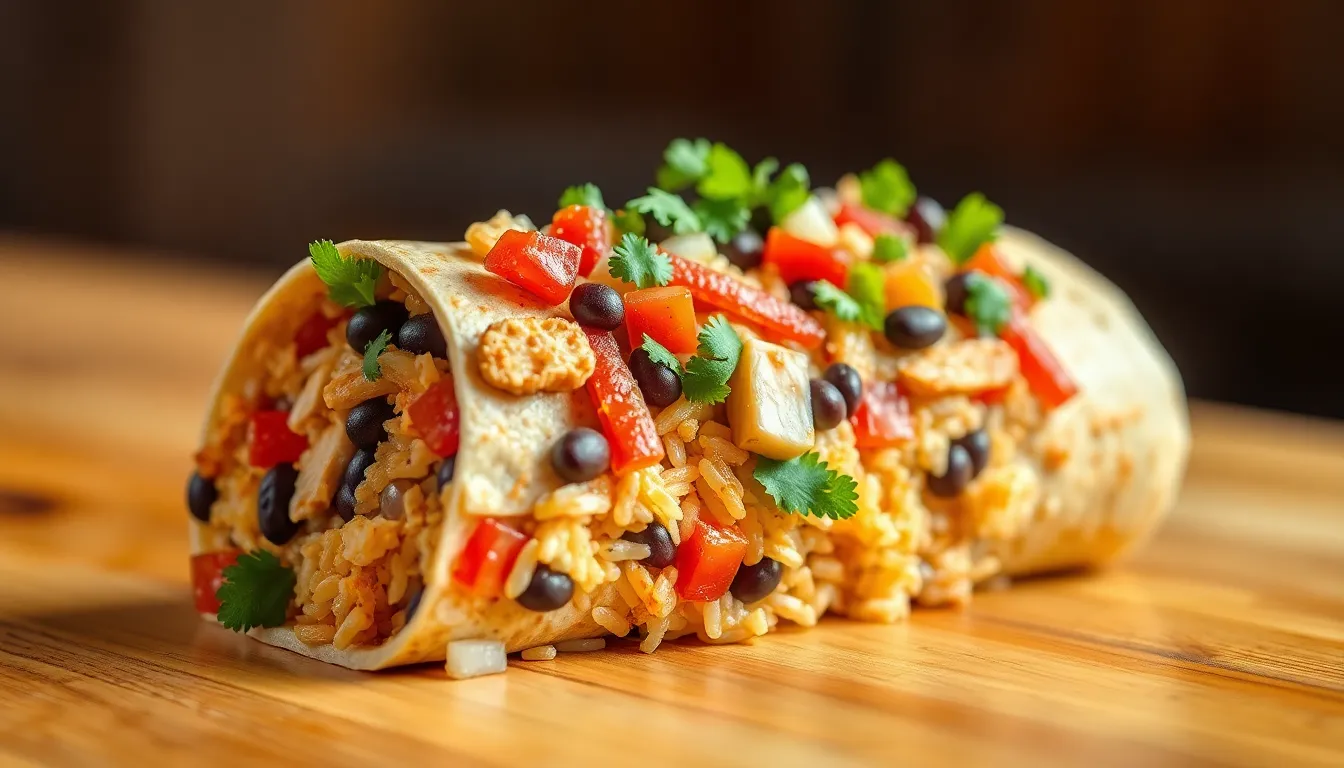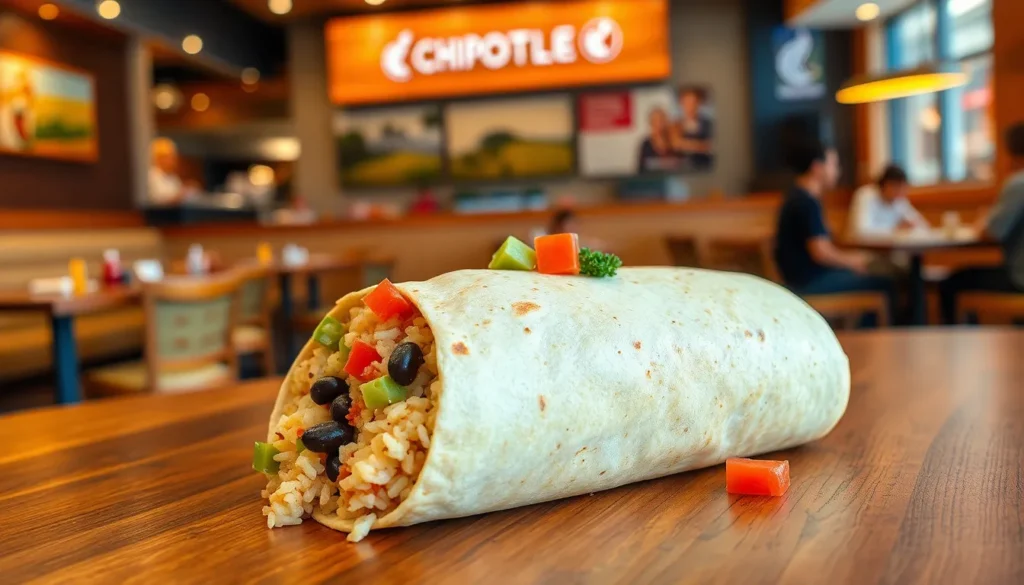Chipotle burritos have become a popular choice for those craving a quick and delicious meal. With customizable ingredients and bold flavors, it’s no wonder many people indulge in these tasty wraps. But as appetites grow, so do concerns about calorie counts and nutritional values.
Understanding how many calories are packed into a Chipotle burrito is essential for anyone mindful of their diet. Whether it’s a post-workout treat or a casual lunch, knowing the calorie content helps make informed choices. This article dives into the specifics of Chipotle burrito calories, breaking down the factors that contribute to the overall count and offering tips for a healthier experience.
Table of Contents
ToggleUnderstanding Chipotle Burritos
Chipotle burritos feature a variety of customizable ingredients, making each meal unique. Customers select from options such as rice, beans, proteins, salsas, and toppings. Each ingredient impacts the overall calorie count and nutritional profile significantly.
Calorie counts for Chipotle burritos range from approximately 400 to over 1,500 calories, influenced primarily by choices made during assembly. For instance, a simple vegetarian burrito with black beans and salsa contains fewer calories than one packed with multiple proteins, sour cream, and cheese.
Key Ingredients and Their Caloric Contributions
- Rice: Brown rice adds about 210 calories; white rice contributes approximately 200 calories.
- Beans: Black beans or pinto beans each add roughly 120 calories.
- Proteins: Options like chicken, steak, barbacoa, carnitas, and sofritas range from 150 to 300 calories per serving.
- Salsas: Fewer calories in salsas compared to other toppings; fresh tomato salsa contains around 25 calories, while corn salsa adds about 80 calories.
- Toppings: Cheese, sour cream, and guacamole significantly increase calorie counts, adding 110, 120, and 230 calories, respectively.
Assembly Process and Its Impact on Calories
Customization plays a crucial role in determining final calorie totals. Choosing additional ingredients boosts calorie content. Opting for fewer toppings or lighter options, such as lettuce and pico de gallo, helps maintain a lower caloric intake.
By understanding the components and their caloric impact, customers can make informed choices while enjoying the variety Chipotle offers. Analyzing the nutritional information aids in creating burritos that align with personal health goals.
Caloric Breakdown of Chipotle Burritos

Understanding the caloric breakdown of Chipotle burritos reveals how customization influences calorie totals. Key ingredients and portion sizes significantly affect overall calorie content.
Ingredients That Contribute to Calories
Chipotle burritos include various ingredients that each add distinct calorie amounts:
- Rice: A serving of white rice contributes about 210 calories; brown rice adds around 215 calories.
- Beans: Black beans and pinto beans each contain approximately 120 calories per serving.
- Proteins: Chicken provides around 180 calories, carnitas approximately 210 calories, barbacoa about 170 calories, and sofritas roughly 150 calories.
- Salsas: Fresh tomato salsa has about 25 calories, medium salsa approximately 35 calories, and corn salsa around 80 calories per serving.
- Toppings: Guacamole adds about 230 calories; cheese contributes around 110 calories and sour cream about 120 calories.
Understanding these ingredients helps customers gauge the caloric impact based on their selections.
Portion Sizes and Their Impact
Portion sizes critically influence the total calorie count in a burrito. Chipotle allows for various serving sizes:
- Base Burrito: A standard burrito typically ranges from 400 to over 1,500 calories, depending on ingredient choices.
- Custom Portions: Opting for extra servings of proteins or toppings quickens calorie accumulation. For instance, adding double meat can increase caloric intake by 150 to 200 calories.
- Lighter Choices: Smaller portions of rice or skipping certain toppings can significantly lower overall calories. For example, requesting lettuce instead of rice can result in a 210-calorie reduction.
By paying attention to ingredient choices and portion sizes, customers can effectively manage their caloric intake while enjoying Chipotle’s offerings.
Comparing Chipotle Burrito Options
Chipotle offers a variety of burrito options, each with unique calorie counts influenced by ingredients and portion sizes. Understanding these differences can help customers make informed choices.
Vegetarian vs. Meat Burritos
Vegetarian burritos often contain fewer calories than meat options. A typical vegetarian burrito, using black beans and salsa, averages around 600 calories. The same burrito with added guacamole can reach approximately 830 calories. In contrast, meat burritos vary significantly in caloric content based on protein choice. For instance, a burrito with chicken adds about 650 calories, while steak may contribute around 760 calories. The choice of protein directly affects the burrito’s final calorie total.
Specialty Burritos and Their Caloric Value
Chipotle’s specialty burritos often contain additional ingredients, increasing their caloric values. A typical Barbacoa burrito averages about 720 calories, while a Carnitas burrito can contain approximately 770 calories. The inclusion of toppings like sour cream and cheese further escalates the calorie count, potentially exceeding 1,000 calories in some combinations. Identifying the specific ingredients in specialty burritos helps determine their caloric contributions, guiding customers towards choices that align with their nutritional goals.
Tips for Lowering Caloric Intake
- Choose a burrito without rice: Skipping rice saves approximately 210 to 215 calories, allowing for a lower total.
- Opt for beans only: Selecting black or pinto beans provides protein and fiber while adding around 120 calories.
- Select lean proteins: Chicken and sofritas contain about 150 to 200 calories, which are lower than steak or carnitas options.
- Add extra veggies: Topping with lettuce, fajita veggies, or salsa contributes minimal calories and enhances nutritional value.
- Limit high-calorie toppings: Avoid or minimize items like sour cream and guacamole, which can add 230 calories or more.
- Choose a smaller portion: Request a burrito bowl instead of a full burrito to significantly reduce calorie intake.
- Share meals: Splitting a burrito with a friend can effectively halve caloric consumption.
- Customize the tortilla: Opt for a lettuce wrap instead of a flour tortilla to eliminate around 300 calories.
- Focus on salsas: Enhance flavor with mild or medium salsa, which adds negligible calories compared to creamy dressings.
- Avoid additional chips and sides: Forgo adding chips and guacamole to keep overall calorie intake at a minimum.
Understanding the calorie content of a Chipotle burrito is essential for making informed dietary choices. With a wide range of ingredients and customizable options, the calorie count can vary significantly. By being mindful of portion sizes and ingredient selections, customers can enjoy a satisfying meal while keeping their nutritional goals in check.
Opting for lighter ingredients or smaller portions can make a big difference in overall caloric intake. Whether choosing a vegetarian option or selecting lean proteins, there are plenty of ways to enjoy a delicious burrito without compromising health. Ultimately, it’s about finding the right balance that aligns with personal preferences and dietary needs.










